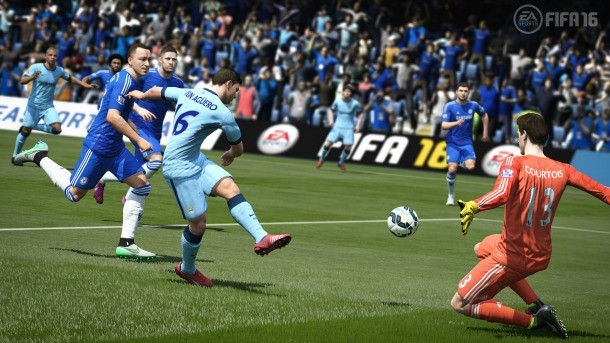Analysis: EA's Digital Profit Margins Twice That Of Retail Sales (And Why That Matters To Gamers)

One of the most profound trends in the video game business today is the significant shift from physical sales to digital delivery. Each quarter, publishers are reporting double-digit growth year-over-year in the area, as consumers are opting for digital copies in greater numbers.
Speaking at the UBS Technology Conference yesterday, EA chief financial officer Blake Jorgensen discussed the cost of doing business at retail. He also revealed in hard numbers why publishers are eager to see consumers shift to digital purchase.
While it seems obvious, Jorgensen puts a fine point on the cost of carrying a disc at a retail outlet. “In a digital sale, you can eliminate the packaging, the disc, the transportation, the logistics around that,” he says. “While it’s simply a piece of plastic, it’s still not an inexpensive effort. That’s $5 plus in the value chain.”
Publishers are also able to shed or transfer expenses related to doing business at retail. This includes point-of-sale advertisements (standees, flyers, posters, etc.) and the risk associated with inventory.

When publishers ship games to retail, they need to hold back a portion of those sales on the balance sheet to account for “reserve.” This is typically defined as the difference between expected sales price versus changes in market value.
For instance, if a game isn’t selling as well as anticipated or there is simply too much stock on hand, publishers may be compelled to offer incentives to retailers to help move product. This helps stores clear out inventory (and make room for future new releases). Sometimes this takes the form of refunds to the retailers to make up for lower sales price to consumers.
“[With digital,] you no longer need to worry about inventory in the channel,” Jorgensen says. “I reserve 20 percent of every sale for sales reserve that ultimately help keeps the channel clean either through promotional dollars for the merchant or for reserve refund dollars for the merchant. That’s a big number at the end of the day.”
Digital carries its own expenses, but Jorgensen points out that the expenses related to retail add up. “Even if your retail margin and your digital margin for actual sales is the same, you’re going to benefit,” he says. “We see oftentimes digital margins almost 2x that of physical margins.”
Margins are defined as the percentage of every dollar of sales the company recognizes as net revenue. It’s calculated as net income / net sales, and reflects how useful a given product is to the company’s bottom line. In this case, doubling a margin via digital sales means that EA is seeing greater benefit from the same types of operations with the shift away from physical.

As development budgets increase, those improved margins help publishers stay on an even keel. With the added benefit of cosmetic microtransaction, Ultimate Team, and other in-app purchases, companies like EA are leveraging the windfall of the digital transition into huge financial gains. Consumers aren't seeing the fruits of this transition beyond the convenience and immediacy of purchases. The improved margins haven't resulted in financial benefit for end-users.
As we see this enormous movement toward digital purchases, we have to reflect on Microsoft's missteps at E3 2013 with regard to the Xbox One. The platform-holder attempted to force migration to digital licensing, regardless of whether gamers purchased digitally or physically. Those errors have been reviewed and rehashed for more than two years, but in this light we are forced to wonder how the landscape would have been different had Microsoft focused on the benefits of digital purchase as an option without attempting to impose its will on a vocal consumer base that would have none of it.
While other publishers might not line up perfectly with EA, what we’ve heard on earnings calls about growing digital uptake reflects a critical trend for the industry. There is significant benefit on the expense side for each digital copy sold, though there are expenses that emerge for that format.
“On the digital point, relative to digital margins, obviously, the price point is relatively equivalent relative to consumer price points, whether it's physical or digital,” said Activision CFO Dennis Durkin in 2014. “And we end up sharing with whoever the platform provider is the percentage of sales to compensate them for effectively the transaction, and that's usually about a 30 percent cut that the first parties end up taking.”
This shift is having an impact on retail, of course. GameStop (Disclosure: GameStop is Game Informer’s parent company) has started selling codes for digital games and other technology products like phones and tablets. And while digital is a priority, publishers continue to place value in retail.
“We haven't had any issues with our retailers at all. They remain our most important channel partner,” said Take-Two CEO Strauss Zelnick in 2014. Additionally, Activision, Disney, Nintendo, and WB rely on retail for toys-to-life products, with the former also dependent for games like Guitar Hero Live.
We also see amongst core consumers who read game publications (like Game Informer), that there is a segment of the community that continues to prefer physical media. The market is changing, digital isn’t plateauing any time soon, and the margin benefits specifically detailed by EA mean we should expect to see continued incentives from publishers to foster the transition.









